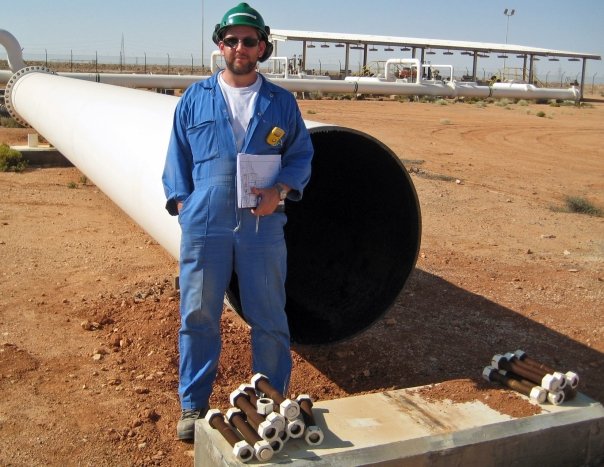Carbon Capture The Options
The UK produced around 326 million tons of CO2 in 2020, down from about 800 million tonnes in 1990 [1]. Cumulatively, the UK has produced approximately 80 billion tons of CO2 since 1750. Globally 1.58 trillion tons of CO2 have been emitted since that date, so the UK is responsible for around 5% of total global emissions since 1750.
There is great interest in reducing carbon emissions not only at the source but also in pulling down CO2 directly from the atmosphere to reduce the magnitude of the greenhouse effect and mitigate future climate change risks. But how much effort does it take to capture, remove and store CO2? I will briefly review some of the facts and figures of how much effort and investment it takes to reduce the UK’s annual emissions through carbon capture and storage. I will review three methods:
(1) The capture of CO2 at the source of emissions using chemical capture (amine plants).
(2) Direct air carbon capture using artificial methods.
(3) Direct air carbon capture using natural methods by growing trees.

CO2 from emission sources can be captured using chemicals, and the CO2 is compressed and liquified and pumped underground for long term storage. It is also possible to create solid carbon for above ground storage, but I will consider the more common method of storing CO2 as a gas or liquid in rocks below ground. Kearns et al. have published an excellent review of the technology readiness and costs of CO2 capture [2]. The cost of capturing CO2 depends on the source and the concentration and partial pressure of the CO2 in the gas emissions stream. So for aluminium plants, the capture of CO2 is difficult and more expensive due to the dispersed nature of the emissions and relatively low concentration of CO2, whereas taking a richer CO2 stream from a Steel COREX plant is more efficient and generally lower in cost.
Cost also depends on the distance the CO2 needs to be transported, whether a new pipeline is constructed or an existing pipeline is reused and whether the geological store is onshore or offshore. In terms of cost, assuming onshore storage with a relatively short repurposed pipeline, it is estimated CO2 capture will cost around 195 $USD per tonne of CO2 stored for aluminium plants. It is about $60 per tonne for coal-fired electricity generation, while for a COREX Steel plant, it will be around 40 $USD a tonne. If we assume a coal-fired power station with offshore storage, with a 100 km newly constructed pipeline, the costs rise to 60 $USD per tonne. Of course, estimates and costs vary from project to project depending on the exact project specifications and local supply chain.
Direct air capture is an alternative method. Rather than capture emissions at source, which can be very dispersed in nature, we can suck the CO2 out of the air, so-called Direct Air Capture (DAC). The leading exponents of DAC are Carbon Engineering (carbonengineering.com), who, to their credit, have been very transparent in publishing the performance of their system [3]. To capture 1% of the UK’s 326 million tons of CO2. The energy required to perform this task is 8.8 GJ per tonne of C02 (assuming the heat and electricity is supplied using natural gas). CO2 is captured from both the atmosphere and the gas used to fuel the capture plant. This process would require using 1% of the UKs gas supply. To capture 10% of the CO2 would need about 10% of the UKs natural gas supply. The plant can also be powered using a combination of natural gas and electricity. In this case, to capture 10% of the UK’s CO2 emissions would require 6% of the UK’s gas supply and 4% of the UK’s electricity supply. The levelized cost for a gas-fueled only plant would be around 180 $ USD per tonne of CO2. We find that these estimates by Carbon Engineering are realistic and transparent.
Forests draw down CO2, and this is an attractive option. Trees can not only draw down CO2 but have a social and ecological utility. Most people would prefer trees and forests over large artificial mechanical and chemical capture plants. But how much CO2 can a forest capture? While the answer is somewhat imprecise and the estimates depend on which paper or source you review. Two useful documents are an analysis by the US Environment Protect Agency published in 1998 [4] and the more up-to-date calculators published by the UK’s Woodland Carbon Code, available online at the https://www.woodlandcarboncode.org.uk/[5]. It is comforting that both sources give very similar answers.
The important thing to know is that forests do not capture much carbon when first planted and once established and mature. Newly planted juvenile forests and trees that are between 5 and 25 years old capture the most carbon. It is often the case that newly planted forests will emit carbon in the first few years due to land-use change. When mature, the carbon budget of the forest is balanced and is often carbon neutral or even emits small amounts of carbon. It also takes a very long time to draw down the carbon, decades to have an impact. The success of forests also depends on the planting method and the survival rates of the trees. How the forest is managed and how mature/dead trees are replaced can make a big difference.
Over 50 years, a hectare of hardwood forest will remove around 450 tonnes of CO2 at a cost of about 100 £GBP per tonne of CO2. To remove 1% of the UK’s carbon would require 550 thousand hectares and around fifty years. To put that in context, greater London extends over 158 thousand hectares. Sitka spruce forests managed by thinning (rather than clear-fell) can capture 177 tonnes of CO2 per hectare at a reduced cost due to the use of marginal land and the cost of the trees. Sitka Spruce can be used as an economic resource and also as a replacement fuel with carbon neutrality. However, some would argue that mono-culture commercial pine forests have a much lower ecological utility.
We might conclude that carbon capture and storage direct from emission sources (i.e. flue gas) is the most cost-effective way to remove carbon. However, carbon capture is cost-effective only where CO2 is in a high enough concentration in the flue gas. For more dispersed and lower concentration CO2 emissions streams, such as aluminium plants, CO2 capture will be expensive. The other problem is that much of our CO2 emissions are highly dispersed coming out of car exhausts and the like, and are not amenable to exhaust gas capture methods.
Direct Air Capture could offer an opportunity to draw down CO2 from the atmosphere at an industrial scale, but the process is very energy-intensive and expensive.
Trees are most appealing and have far greater social and ecological utility. However, carbon capture by trees takes decades, and we might not have decades, plus can we reforest at the enormous scale required to make a real difference.
You can find out more about CO2 capture and other energy transition technologies at our website www.insyn.co.uk where we provide calculators to find out for yourself.
[1] “2020 UK greenhouse gas emissions, provisional figures,” 2021. Accessed: Sep. 06, 2021. [Online]. Available: https://assets.publishing.service.gov.uk/government/uploads/system/uploads/attachment_data/file/972583/2020_Provisional_emissions_statistics_report.pdf#:~:text=Emissions per unit of electricity supplied from fossil,to 180 tonnes per GWh of electricity supplied.
[2] C. Kearns, David; Liu, Harry; Consoli, “Technology readiness and costs of CCS,” 2021. Accessed: Jul. 28, 2021. [Online]. Available: https://www.globalccsinstitute.com/resources/publications-reports-research/technology-readiness-and-costs-of-ccs/.
[3] D. W. Keith, G. Holmes, D. St. Angelo, and K. Heidel, “A Process for Capturing CO2 from the Atmosphere,” Joule, vol. 2, no. 8, pp. 1573–1594, 2018, doi: 10.1016/j.joule.2018.05.006.
[4] “Method for Calculating Carbon Sequestration by Trees in Urban and Suburban Settings,” 1998. Accessed: Aug. 24, 2021. [Online]. Available: http://www.eia.doe.gov/oiaf/1605/frntend.html.
[5] R. Haw, “Assessing the Investment Returns from Timber and Carbon in Woodland Creation Projects,” no. August, pp. 1–8, 2017, [Online]. Available: www.forestry.gov.uk/england-wctf.





